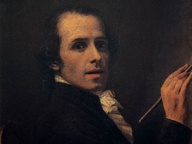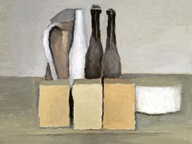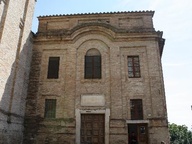Bruno Di Bello
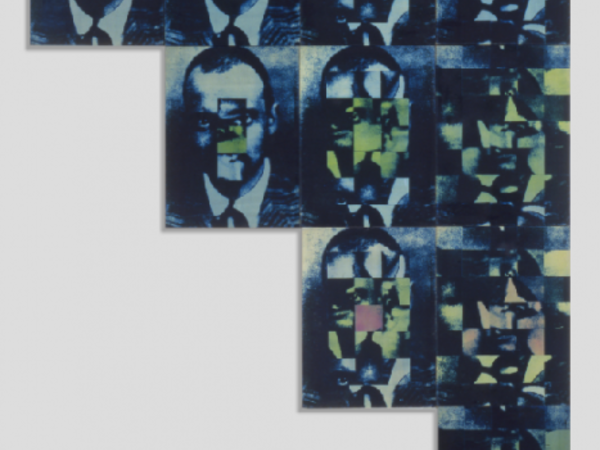
Bruno Di Bello Ritratto di Paul Klee, 1968, tela fotografica, viraggio blu, 280x200 cm. Collezione privata
From 22 Maggio 2018 to 27 Luglio 2018
Milan
Place: Fondazione Marconi
Address: via Tadino 15
Times: Tuesday-Saturday 10-13 / 15-19 (closed June 2, Republic Day) Opening hours (from June 4): Monday-Friday 10-13 / 15-19
Ticket price: free entrance
Telefono per informazioni: +39 02 29419232
E-Mail info: info@fondazionemarconi.org
Official site: http://www.fondazionemarconi.org
Bruno Di Bello returns to the Marconi Foundation with an exhibition that compares works from the 1970s and 1980s, made using photo/graphic techniques, with those from recent years, among them the large computer created triptychs from 2016 and 2017 printed on Fine Art canvas.
I see this new phase of Di Bello’s work as strongly focused on the initial Zeitgeist of this third millennium, and yet in reality also connected with the period of his youth, when constant analysis permeated the construction of form and image... Where Di Bello’s eye and mind resurface with the same unaltered vigour of the artist-explorer and troubadour of other “places” and new beauty.
B. Corà, “Images of the III millennium”, in Bruno Di Bello Frattali e altro, Fondazione Marconi, 2015
These words, written by critic Bruno Corà for the artist’s last solo exhibition at Fondazione Marconi in 2015, prompted the idea for Bruno Di Bello’s current exhibition to mark his eightieth birthday.
After joining the artistic scene as a member of Naples-based gruppo ’58, Di Bello’s initial work was notable for its references to sign-based abstract art and investigations into the potential decomposition of the image, which he practised through photography.
The artist’s favourite medium is photosensitive canvas on which the image is captured, decomposed, analysed and then recomposed before the viewer’s eyes.
Over the years he has experimented with the use of light and, since the end of the 1980s, he has concentrated on studying new technologies, particularly digital photography, which has made him a specialist in the field of techniques of computer-created and processed images. In an interview at the beginning of the century, Bruno Di Bello stated: I am convinced that we’ll be able to find a truly avant-garde language only through a competent, expert use of digital technologies...
Bruno Corà commented as follows on this statement in his essay for the 2015 exhibition at the Marconi Foundation:
However, among the artists who set themselves this goal, he is certainly one of the most credible and authoritative... not only because he has since provided precise and consistent evidence of a distinct aptitude for experimenting his own form of technological semiology in his works by using photography and light in unusual ways, but also because from as early as the second half of the 1960s, Di Bello began using square-shaped grids as a basis for the process of disassembling, deconstructing and reassembling the image, which was a prelude to the visuality of digital technology.
Bruno Di Bello was born in Torre del Greco in 1938. After studying at the Naples Academy of Fine Arts, he began to exhibit his work. Together with Biasi, Del Pezzo, Fergola, Luca and Persico, he founded Gruppo ’58. Among the merits of this young group was to establish direct contact with contemporary art events in Milan, particularly through the magazine “Documento Sud”, the ideal equivalent of “Azimuth”. After the group’s first exhibitions at the Galleria San Carlo and the Galleria Minerva in Naples, in 1960 Di Bello held his first solo show at Galleria 2000 in Bologna. In 1965 he began to include photography in his work, and in 1966 held his first solo show at Lucio Amelio’s Modern Art Agency. In 1967 he began to use light-sensitive canvas directly and relocated to Milan. The following year he exhibited with the Mec-Art group, theorised by Pierre Restany.
Di Bello investigated the possibilities of deconstructing images, studying the icons of the main figures of the historical avant-gardes and their artistic myths (Klee, Duchamp, Man Ray, Mondrian and the Russian Constructivists), and from this developing the notion of art as a reflection on the history of modern art.
He exhibited for the first time in Milan at Galleria Franco Toselli in 1969, and in 1970 at Kuchels Gallery (Bochum), Wspòlczesna Gallery (Warsaw), Galleria Bertesca (Genoa) and at the Venice Biennale.
1971 marked his first collaboration with Studio Marconi: an installation consisting of twenty-six photographic canvases with the deconstruction of the entire alphabet. It was exhibited again in 1974, ’76, ’78 and ’81. In the early 1970s his photographic canvases also began to include words and concepts whose deconstruction and reconstruction animate a game involving the loss and rediscovery of meaning. In 1974, he exhibited at the Art in Progress Gallery in Munich and at the Kunsthalle in Bern, in 1975 at the Müller Gallery (Stuttgart) and the ICC (Antwerp), in 1977 at the Galleria Lucio Amelio (Naples) and the Museum Boijmans Van Beuningen (Rotterdam). In 1978 his work was shown at the Galleria Rondanini (Rome), and in the summer of 1980 he produced a large work for the Festival of Spoleto.
Other works from the 1970s and 1980s were produced by drawing directly on photosensitive canvas with the beam of an electric torch. Also during the 1980s Di Bello experimented with a new way of using the photographic technique, juxtaposing human figures and objects between the light source and the canvas so that their shadows were cast on the latter. He then developed the photosensitive canvas with broad brush strokes of developer, as in Apollo and Dafne nel terremoto, made for the Terrae motus collection displayed by Lucio Amelio in 1987 and exhibited in Paris at the Grand Palais, and now part of the collection at the Royal Palace of Caserta.
In the 1990s, Di Bello began to study the new technologies, researching synthetic images, digital photography and new geometries visualised by computer. He showed his new work in 2003 at Marconi’s, in 2004 at the Galleria Plurima (Udine), in 2005 at Fondazione Morra (Naples), and in 2008 at the Galleria Elleni (Bergamo).
In 2010, the Marconi Foundation held a major retrospective of his work. The occasion was marked by a monograph, Bruno Di Bello – Antologia, published by Silvana Editoriale for the VAF-Stiftung, Frankfurt am Main and edited by Volker Feierabend with texts by Michele Bonuomo, Mario Costa, Marco Meneguzzo and Angela T ecce.
In 2011, he held a solo show at the Museu de Arte Contemporânea de Niterói (MAC) in Rio de Janeiro. The show had debuted at the Certosa Museum on Capri then moved to the Palace of Arts (PAN) in Naples. The three exhibitions were the result of an initiative by the Arteas association in Naples.
In 2011, Di Bello held a keynote lecture at Milan Polytechnic during the course taught by Alberto Aschieri, and showed his Grande vetro 2 from 1975 at the exhibition of student works on the Polytechnic patio.
In November 2015 he held a solo exhibition at the Marconi Foundation, for which Bruno Corà wrote an introductory text. The following year an exhibition curated by Luca Panaro Là dove interviene il disegno-la fotografia took place at the Bottari Lattes-Turin Foundation. In 2016 he participated to “Italia Pop. L’arte negli anni del boom”, a group exhibition held at the Fondazione Magnani Rocca, Mamiano di Traversetolo. Finally, in 2017 he inaugurated a solo show at the Archaeological Museum of Naples (MANN), comprised of three six- metre triptychs of fractal geometry, for which he used the same colours he had carefully analysed in the Pompeian frescoes conserved in the museum. To accompany the exhibition, Roberto Paci Dalò made a video inspired by this operation, and Skira published a catalogue containing texts by Bruno Corà, Raffaella Perna and Maria Savarese, and a poem by Nanni Balestrini.
Bruno Di Bello lives and works in Milan.
Inauguration: 22 May 2018 from 06pm
I see this new phase of Di Bello’s work as strongly focused on the initial Zeitgeist of this third millennium, and yet in reality also connected with the period of his youth, when constant analysis permeated the construction of form and image... Where Di Bello’s eye and mind resurface with the same unaltered vigour of the artist-explorer and troubadour of other “places” and new beauty.
B. Corà, “Images of the III millennium”, in Bruno Di Bello Frattali e altro, Fondazione Marconi, 2015
These words, written by critic Bruno Corà for the artist’s last solo exhibition at Fondazione Marconi in 2015, prompted the idea for Bruno Di Bello’s current exhibition to mark his eightieth birthday.
After joining the artistic scene as a member of Naples-based gruppo ’58, Di Bello’s initial work was notable for its references to sign-based abstract art and investigations into the potential decomposition of the image, which he practised through photography.
The artist’s favourite medium is photosensitive canvas on which the image is captured, decomposed, analysed and then recomposed before the viewer’s eyes.
Over the years he has experimented with the use of light and, since the end of the 1980s, he has concentrated on studying new technologies, particularly digital photography, which has made him a specialist in the field of techniques of computer-created and processed images. In an interview at the beginning of the century, Bruno Di Bello stated: I am convinced that we’ll be able to find a truly avant-garde language only through a competent, expert use of digital technologies...
Bruno Corà commented as follows on this statement in his essay for the 2015 exhibition at the Marconi Foundation:
However, among the artists who set themselves this goal, he is certainly one of the most credible and authoritative... not only because he has since provided precise and consistent evidence of a distinct aptitude for experimenting his own form of technological semiology in his works by using photography and light in unusual ways, but also because from as early as the second half of the 1960s, Di Bello began using square-shaped grids as a basis for the process of disassembling, deconstructing and reassembling the image, which was a prelude to the visuality of digital technology.
Bruno Di Bello was born in Torre del Greco in 1938. After studying at the Naples Academy of Fine Arts, he began to exhibit his work. Together with Biasi, Del Pezzo, Fergola, Luca and Persico, he founded Gruppo ’58. Among the merits of this young group was to establish direct contact with contemporary art events in Milan, particularly through the magazine “Documento Sud”, the ideal equivalent of “Azimuth”. After the group’s first exhibitions at the Galleria San Carlo and the Galleria Minerva in Naples, in 1960 Di Bello held his first solo show at Galleria 2000 in Bologna. In 1965 he began to include photography in his work, and in 1966 held his first solo show at Lucio Amelio’s Modern Art Agency. In 1967 he began to use light-sensitive canvas directly and relocated to Milan. The following year he exhibited with the Mec-Art group, theorised by Pierre Restany.
Di Bello investigated the possibilities of deconstructing images, studying the icons of the main figures of the historical avant-gardes and their artistic myths (Klee, Duchamp, Man Ray, Mondrian and the Russian Constructivists), and from this developing the notion of art as a reflection on the history of modern art.
He exhibited for the first time in Milan at Galleria Franco Toselli in 1969, and in 1970 at Kuchels Gallery (Bochum), Wspòlczesna Gallery (Warsaw), Galleria Bertesca (Genoa) and at the Venice Biennale.
1971 marked his first collaboration with Studio Marconi: an installation consisting of twenty-six photographic canvases with the deconstruction of the entire alphabet. It was exhibited again in 1974, ’76, ’78 and ’81. In the early 1970s his photographic canvases also began to include words and concepts whose deconstruction and reconstruction animate a game involving the loss and rediscovery of meaning. In 1974, he exhibited at the Art in Progress Gallery in Munich and at the Kunsthalle in Bern, in 1975 at the Müller Gallery (Stuttgart) and the ICC (Antwerp), in 1977 at the Galleria Lucio Amelio (Naples) and the Museum Boijmans Van Beuningen (Rotterdam). In 1978 his work was shown at the Galleria Rondanini (Rome), and in the summer of 1980 he produced a large work for the Festival of Spoleto.
Other works from the 1970s and 1980s were produced by drawing directly on photosensitive canvas with the beam of an electric torch. Also during the 1980s Di Bello experimented with a new way of using the photographic technique, juxtaposing human figures and objects between the light source and the canvas so that their shadows were cast on the latter. He then developed the photosensitive canvas with broad brush strokes of developer, as in Apollo and Dafne nel terremoto, made for the Terrae motus collection displayed by Lucio Amelio in 1987 and exhibited in Paris at the Grand Palais, and now part of the collection at the Royal Palace of Caserta.
In the 1990s, Di Bello began to study the new technologies, researching synthetic images, digital photography and new geometries visualised by computer. He showed his new work in 2003 at Marconi’s, in 2004 at the Galleria Plurima (Udine), in 2005 at Fondazione Morra (Naples), and in 2008 at the Galleria Elleni (Bergamo).
In 2010, the Marconi Foundation held a major retrospective of his work. The occasion was marked by a monograph, Bruno Di Bello – Antologia, published by Silvana Editoriale for the VAF-Stiftung, Frankfurt am Main and edited by Volker Feierabend with texts by Michele Bonuomo, Mario Costa, Marco Meneguzzo and Angela T ecce.
In 2011, he held a solo show at the Museu de Arte Contemporânea de Niterói (MAC) in Rio de Janeiro. The show had debuted at the Certosa Museum on Capri then moved to the Palace of Arts (PAN) in Naples. The three exhibitions were the result of an initiative by the Arteas association in Naples.
In 2011, Di Bello held a keynote lecture at Milan Polytechnic during the course taught by Alberto Aschieri, and showed his Grande vetro 2 from 1975 at the exhibition of student works on the Polytechnic patio.
In November 2015 he held a solo exhibition at the Marconi Foundation, for which Bruno Corà wrote an introductory text. The following year an exhibition curated by Luca Panaro Là dove interviene il disegno-la fotografia took place at the Bottari Lattes-Turin Foundation. In 2016 he participated to “Italia Pop. L’arte negli anni del boom”, a group exhibition held at the Fondazione Magnani Rocca, Mamiano di Traversetolo. Finally, in 2017 he inaugurated a solo show at the Archaeological Museum of Naples (MANN), comprised of three six- metre triptychs of fractal geometry, for which he used the same colours he had carefully analysed in the Pompeian frescoes conserved in the museum. To accompany the exhibition, Roberto Paci Dalò made a video inspired by this operation, and Skira published a catalogue containing texts by Bruno Corà, Raffaella Perna and Maria Savarese, and a poem by Nanni Balestrini.
Bruno Di Bello lives and works in Milan.
Inauguration: 22 May 2018 from 06pm
SCARICA IL COMUNICATO IN PDF
COMMENTI

-
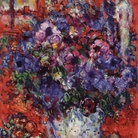 Dal 20 aprile 2024 al 27 ottobre 2024
Conversano | Castello Conti Acquaviva D'Aragona
Dal 20 aprile 2024 al 27 ottobre 2024
Conversano | Castello Conti Acquaviva D'Aragona
-
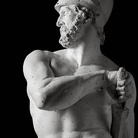 Dal 20 aprile 2024 al 29 settembre 2024
Possagno | Museo Gypsotheca Antonio Canova
Dal 20 aprile 2024 al 29 settembre 2024
Possagno | Museo Gypsotheca Antonio Canova
-
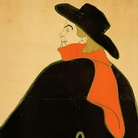 Dal 20 aprile 2024 al 21 luglio 2024
Torino | Mastio della Cittadella
Dal 20 aprile 2024 al 21 luglio 2024
Torino | Mastio della Cittadella
-
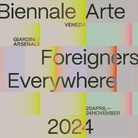 Dal 20 aprile 2024 al 24 novembre 2024
Venezia | Sedi varie
Dal 20 aprile 2024 al 24 novembre 2024
Venezia | Sedi varie
-
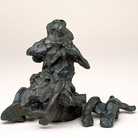 Dal 16 aprile 2024 al 15 settembre 2024
Venezia | Gallerie dell’Accademia
Dal 16 aprile 2024 al 15 settembre 2024
Venezia | Gallerie dell’Accademia
Willem de Kooning and Italy
-
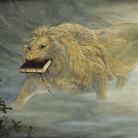 Dal 17 aprile 2024 al 22 settembre 2024
Venezia | Ateneo Veneto
Dal 17 aprile 2024 al 22 settembre 2024
Venezia | Ateneo Veneto

